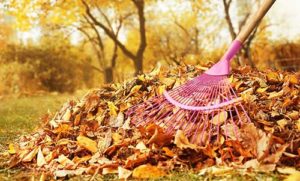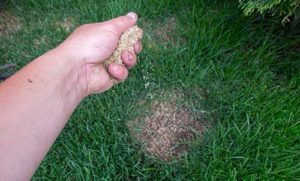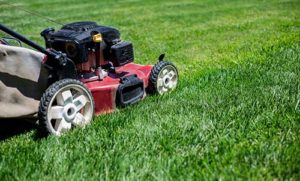Get Your Lawn Ready For Winter in 5 Steps
As fall and winter roll around, the last thing on your mind is probably taking care of your lawn. While it’s true that grass grows at a slower rate during the colder months of the year, carrying out some winter lawn do-it-yourself maintenance now could really help your lawn to flourish and thrive.
In this article, we’ll take a look at some ways you can prepare your lawn for the winter and look forward to a healthy lawn come spring and summer.
First, Get to Know Your Lawn
In the Midwest, lawns have to contend with scorching hot summers and frigid winters. The first step to a great-looking lawn is knowing a little about the types of grass that grow in the Midwest and how to look after your lawn. Kentucky bluegrass, for example, is one of the most popular grasses in the Midwest and great for producing healthy, lush lawns. Its robust root system helps this grass to grow quickly and it quickly repairs damaged and sparse areas. It does well in both full sun and partial shade. Another popular variety is perennial ryegrass. It’s usually mixed with other varieties and is very resilient to foot traffic.
Prepare Your Lawn For the Winter Ahead
While it might not look like much is happening with your lawn during the fall, looks can be deceiving. Beneath the surface, your grass is busily absorbing nutrients, energy, and moisture in preparation for the dormant winter ahead.
By taking some time to prepare your lawn for the winter, you can help to keep your turf strong and green throughout the fall, and ready to perk up again once spring arrives. Winterizing your lawn will help to strengthen the roots and help your grass to survive cold weather, including frost and snow. Let’s take a look at some ways you can prepare your lawn for the winter ahead.
1. Use Fallen Leaves to Your Advantage

To use them to your advantage, rake the majority of the leaves from your lawn, leaving some behind, or the RYAN lawn pros can remove leaves from your lawn. These smaller particles will break down over time and deliver their rich nutrients to your lawn. It’s all about getting the balance right to ensure your particular type of grass gets what it needs. For example, a thick layer of leaves can deprive cool-season grasses such as Kentucky bluegrass from the sunlight it depends on. Leaves can also be a great addition to your home compost pile.
2. Use Compost Piles to Nourish Your Lawn and Garden
As we’ve just mentioned, fallen leaves make an excellent addition to your garden compost and will provide your garden with the rich nutrients it needs during the winter months and beyond. Using compost on your lawn is one of the best things you can do to feed it. Not only do the composted materials nourish your grass plants, but they also help to create a more open texture to the soil surrounding the grass roots. This allows moisture and air to get to the roots when they need it the most.
To create a nutrient-dense compost that you can use all year round on your lawn and garden, create a compost pile using organic materials. Good compostable items include grass clippings, vegetables, fruits, sawdust, plant prunings and even teabags. Just be sure not to use inorganic materials as these may have been treated with pesticides that could be harmful to your garden.
3. Aerate Your Lawn Before Winter Arrives
One of the most important jobs to do when it comes to autumn lawn care is to aerate the soil underneath your lawn. If you are not sure when or how to do this, you might want to hire a professional lawn care company, especially if you have a large lawn. The best time to undertake this task for cool-season grass is during the early fall. If you have warm-season grass, such as Bermuda grass or centipede grass, the best time is during the late spring-early summer.
It’s best to aerate your lawn at least four weeks before the first frost hits. Some lawn mowers are fitted with an aerator attachment, or you might like to hire or purchase an aerator if this is not the case with your model. This equipment will make light work of large lawns. For smaller lawns, a manual aerator should get the job done.
4. Overseed Your Lawn Before the First Hard Freeze

However, while overseeding might sound like an easy task, it is actually one of the most challenging do it yourself lawn maintenance tasks. You need to ensure that the seeds have complete contact with the soil and are kept moist until they germinate. They must be well established before the cold season starts. Many people choose to hire a professional lawn care company for this chore as they will have the time and experience to sow and look after your seeds in the right way.
5. Mow the Grass Short For Winter Months

Once the winter is in full swing, you can winterize your lawn mower or use a small engine professional like Maisch Small Engine, and store it away until it’s needed again in the spring. While many grass varieties continue to grow through the winter, the growth is usually minimal and will not need mowing.
Winter Lawn Care From the Experts
If you are low on time or just don’t relish the thought of working outdoors in the colder weather, why not hire a professional lawn care company to take on your winter lawn care? Ryan Lawn & Tree has over 35 years of experience in lawn maintenance and offers our services throughout every season. Contact us today to find out more about our services and how we can help your lawn to thrive.









